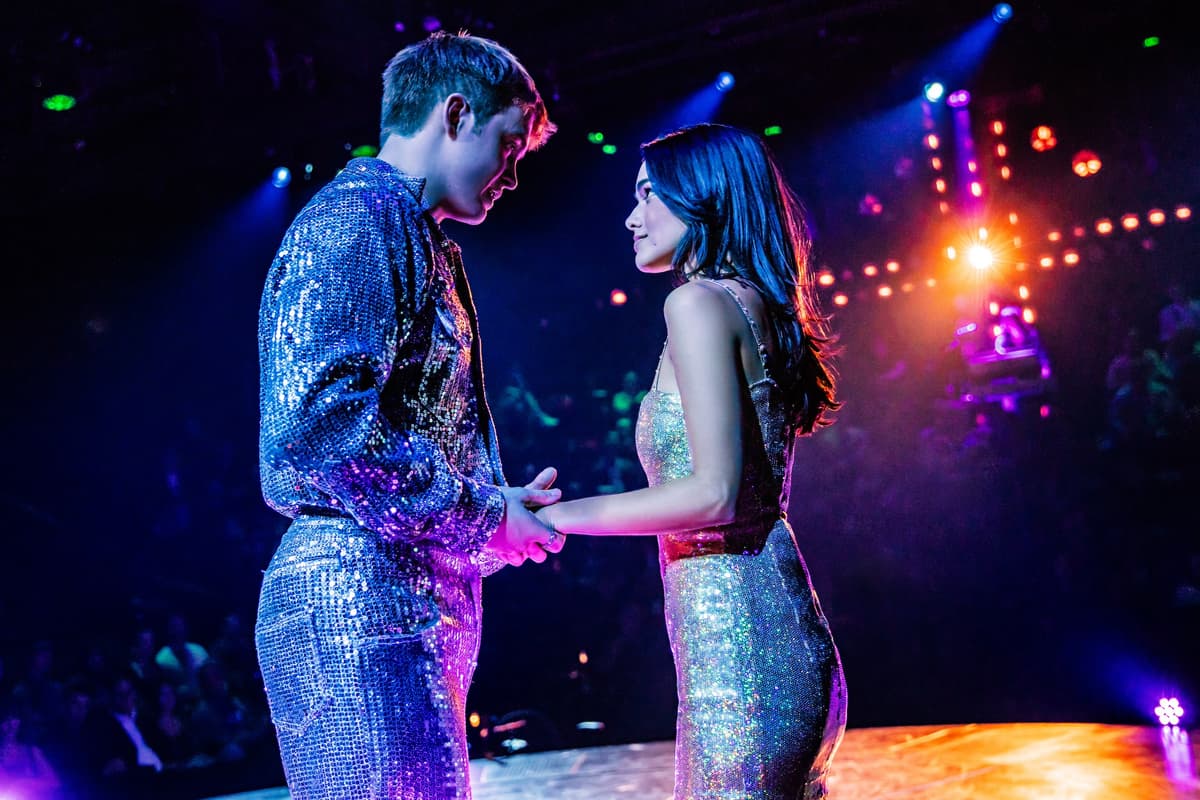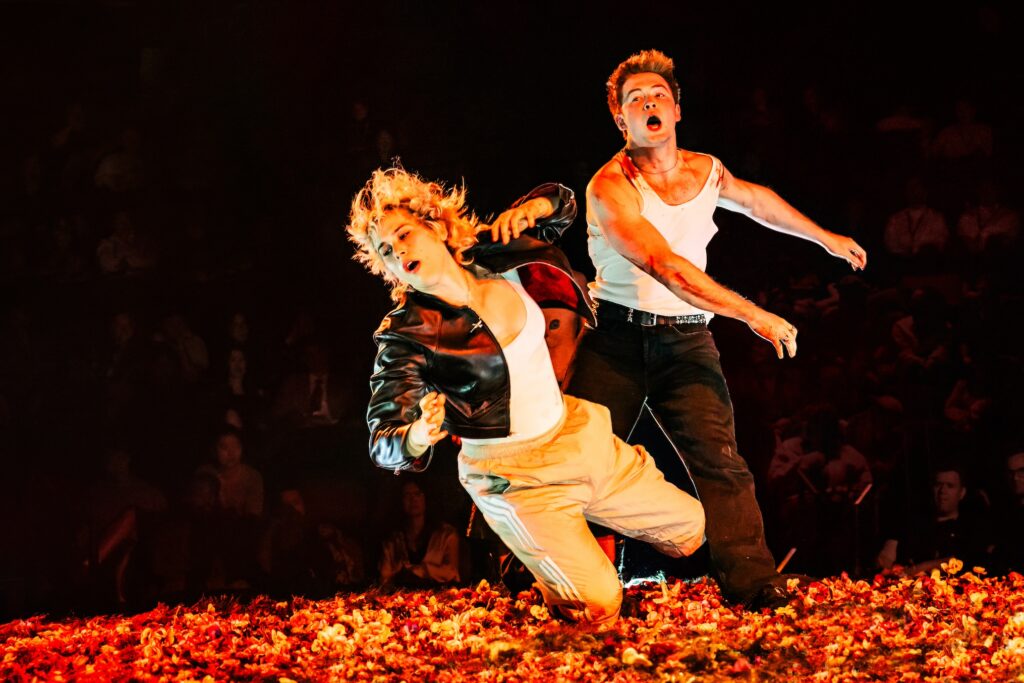Director Sam Gold’s ‘Romeo + Juliet’ Is Technically Shakespeare, but the Bard’s Words Are Often Overshadowed in This Garish Production
While I have no problem with alterations such as suggesting Benvolio secretly pines for Romeo, I don’t find it especially daring in 2024. I found myself asking, as I did often while watching this production, what does this add to the story?

The director Sam Gold is known for shaking things up in his productions of canonical plays, particularly when it comes to Shakespeare. His “King Lear” of several years back starred a woman (the late, great Glenda Jackson) in the title role; for “Macbeth,” he preceded the action with a short lecture providing historical background, delivered by an actor in a wheelchair.
Truly, though, nothing prepared me for Mr. Gold’s “Romeo + Juliet,” which opened on Broadway this week. Another auteur not known for subtlety, Baz Luhrmann, used the same title nearly three decades ago for his modernized screen adaptation of this seminal tale of star-crossed love; Mr. Gold seems determined to bring it kicking and screaming — literally, at points — into the 21st century.
The new “Romeo + Juliet” has its own prelude, during which members of the youthful, multi-racial company, clad in contemporary garb, prance around a shopping cart filled with stuffed animals, some of them tossing a teddy bear. The initially stark set, designed by the collective dots, and Isabella Byrd’s lighting — dark, but pierced by bright beams — suggest a nightclub; the vibe is reinforced by electronic music by a noted pop-star collaborator, Jack Antonoff, whose original material, including songs, will be used throughout the production.
In case you haven’t gotten the point that this is supposed to be a very modern and extremely hip take on an old story, the strapping British actor and teen idol playing Romeo, Kit Connor, and another cast member start vaping. (They use an herbal, AEA-approved product, as performers smoking cigarettes on stage generally do.) Then Gabby Beans, an acclaimed actress who juggles three different traditionally male roles here — Mercutio, the Friar, and the Prince — starts introducing the players by their real and character names.

After the thickly bearded actor who plays both Capulet and Lady Capulet, Sola Fadiran, is announced, the other performers — still jumping around like they’re in a high school production of “Hair” or “Rent,” with updated clothing and music — start chanting, “Go, Mommy – and Daddy!” Or perhaps it was, “Go, Mommy! Go, Daddy!” They were so pumped up I had some trouble deciphering.
From there, Mr. Gold shifts to the actual play (which has been cut and edited, but not radically), but the text is often overshadowed in this production, which despite its minimal scenic design is as garish, visually and tonally, as anything you’ll see on Broadway this season. The director does, to be fair, go out of his way to underline the Bard’s flair for sexual innuendo; no mention of “maidenhead” or double entendre is left unexploited, and a few are milked for laughs.
Mr. Gold is abetted by the costume designer, Enver Chakartash, who dresses Mr. Connor and some of the other actors in rib-hugging tank tops and shiny belts. As Juliet, Rachel Zegler — who rose to fame playing Maria, a character based on Juliet, in Steven Spielberg’s “West Side Story” — turns up in a sexy little top and baggy pants (a popular combo among teenage girls nowadays), but then trades the latter for a succession of skimpier accompaniments. (At the masked ball, she sports a tight, sparkling dress, to complement the blinding glitter of Mr. Connor’s suit.)
Movement director and choreographer Sonya Tayeh adds to the carnality — though I’m not sure if it was her decision or Mr. Gold’s to, say, have Romeo thrust his crotch against the back of Benvolio’s head as the latter, played by a sweetly earnest Taheen Modak, kneels at one point. The relationship between these two buddies, as played here, is fraught with homoeroticism, with Mr. Modak regarding Mr. Connor with barely repressed longing.
I have no problem with the suggestion that Benvolio secretly pines for Romeo; nor do I find it especially daring in 2024. But I found myself asking, as I did often while watching this production, what does this add to the story? The elements that stray the least from convention, in fact, are generally the most effective here; that includes the portrait of Juliet’s Nurse by a transgender actress, Tommy Dorfman, which is comedically savvy while conveying genuine warmth and concern.
The two leads also bring the necessary tenderness and pluck to their parts, and look lovely together, though the stars in this case are less crossed than somewhat mismatched: Mr. Connor’s elegant, almost regal Romeo seems to belong in a different staging than Ms. Zegler’s decidedly modern and, to be honest, rather prosaic Juliet — a disappointment after her marvelous Maria, though Mr. Antonoff’s songs at least allow her to show off her gleaming soprano, this time in more of a pop context.
The music interspersed through this “Romeo + Juliet” also includes a song-and-dance number, performed just before the second act, that might have been lifted out of a boy-band concert. At the preview I caught last week, the audience, which included many young people, loved it. The entire production flagrantly panders to them, so perhaps they’ll appreciate it more than older folks. But I’d like to give them more credit than that.

